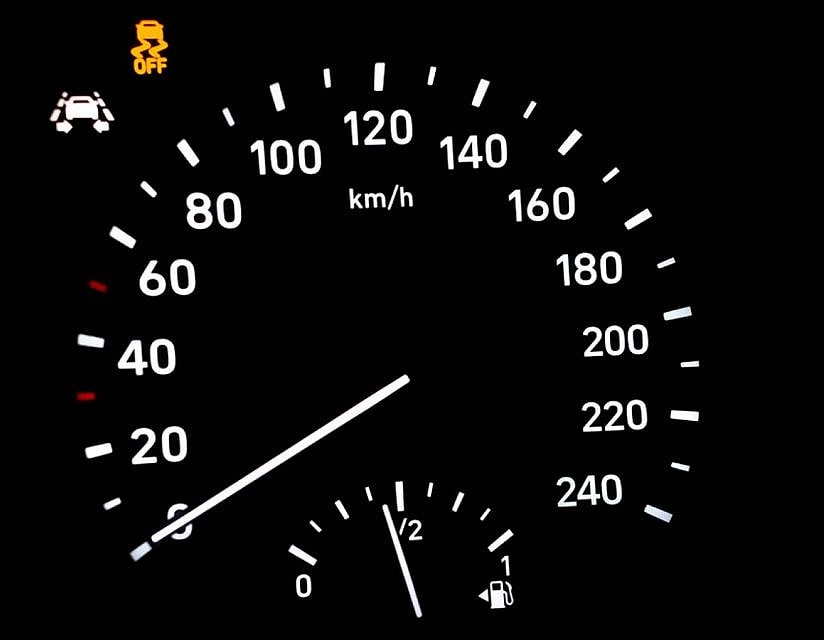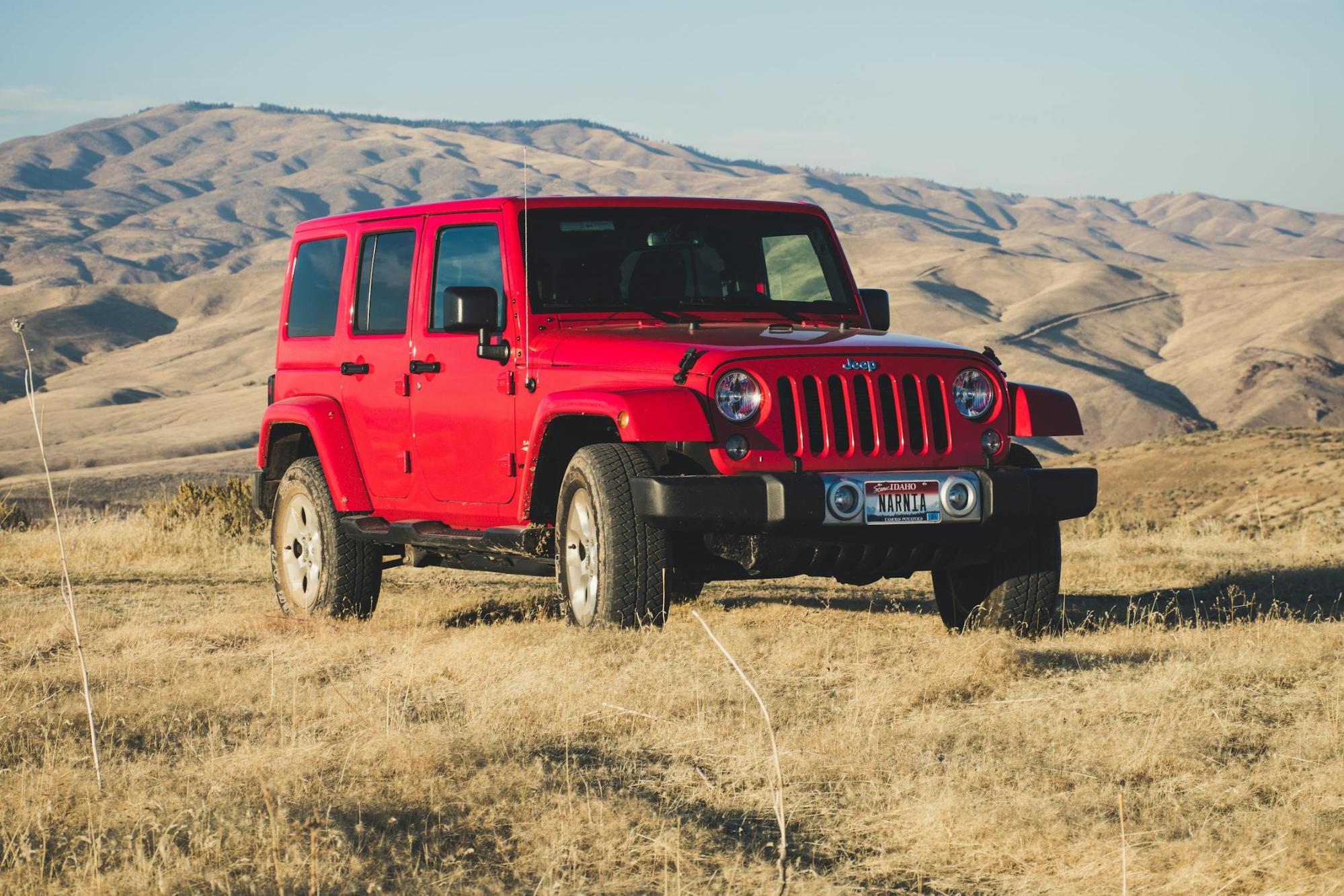Most modern cars have a Traction Control System (TCS), a vital safety feature that helps drivers control rough roads by reducing wheel spin. In particular, the TCS is appreciated on rain, sand, and mud-laden surfaces, keeping the vehicle properly oriented and stable by maintaining the correct amount of power to the wheels.
Having a TCS in your vehicle ensures that you are prioritized for safety and stability, but it does not guarantee that you will never experience wheel spin.
This technology is widely used in the auto industry and is standard in cars like Jeep, providing safer and smoother off-road experiences.
What is Traction Control?
Traction control is a control system designed to improve the stability and traction of a vehicle by controlling the amount of power delivered to the wheels.
It is an essential feature in modern vehicles, especially those designed for off-road driving or driving in challenging weather conditions. The traction control system works by monitoring the speed and traction of each wheel and adjusting the power delivery accordingly. This helps to prevent wheelspin, loss of traction, and skidding, making the vehicle more stable and easier to control.
How Traction Control System Works?
The TCS works by monitoring wheel spin in real time and quickly responding to it. In a case where this system operates, the sensors, which are usually part of the anti-lock braking system or ABS, detect when one wheel spins faster than the others, which is indicative of loss of traction.
It then rapidly adjusts engine power or applies brakes to the slipping wheel to get it back within a controlling position, routes power to wheels that grip better, and enables safe forward movement of the vehicle.
TCS is invaluable in vehicles that truly cater to rugged terrains, such as the Jeep Wrangler. For example, when driving in sand or mud, TCS will control wheel slip to maintain stability so as not to get stuck or lose control.
TCS Advanced Features and Settings
Sensors and Computer Controls
Modern traction control systems often come with advanced features and settings that allow drivers to customize the system to their driving style and preferences. Some common features include:
- Multiple Driving Modes: Many vehicles come with multiple driving modes, such as sport, comfort, and off-road modes, which adjust the traction control system accordingly.
- Adjustable Sensitivity: Some vehicles allow drivers to adjust the sensitivity of the traction control system, allowing for more or less intervention.
- Customizable Settings: Some vehicles allow drivers to customize the traction control system to their specific needs, such as adjusting the system’s response to different road surfaces.
Benefits of Traction Control System

The convenience of TCS goes further than mere wheel spin prevention; it is a feature that makes driving comfortable:
- Improved Safety: By sustaining traction on slippery ground, TCS reduces the possibility of skidding and accidents, which guarantees a safer ride.
- Improved Vehicle Control: TCS helps maintain vehicle movement in the intended direction, adding control when turning on slick or loose surfaces.
- Longer Tire Life: TCS extends the life of tires by minimizing the useless wheel spin that causes wear.
The TCS is a whole new addition to the armory of any Jeep owner who regularly ventures into the desert terrains of the UAE, significantly enhancing both off-road and on-road driving in terms of safety and control.
How Does TCS Enhance Driver Safety?

TCS is crucial for the safety of drivers because this technology is involved in active accident prevention, especially under unfavorable conditions of rain, snow, sand, or mud.
Functionally, TCS works by refusing to let any vehicle wheels spin faster than the others, thus providing the right grip and maintaining controlled wheel speed. This is particularly important during acceleration or driving on slippery surfaces, as it prevents skidding and sliding, which may result in the car losing control all of a sudden.
On wet or sandy roads, which are so common in the UAE, for example, TCS maintains necessary traction by modulating power to certain wheels, keeping the vehicle sure-footed and agile. Stability allows drivers to make sharp turns, sudden stops, or quick accelerations with less chance of spinning out or fishtailing.
Taken together, TCS and electronic stability control ESC provide an even firmer grounding for safety. ESC detects vehicle direction and makes any needed adjustments to keep the vehicle on course.
ESC complements TCS harmoniously further to optimize the control and stability of the car. It gives buyers enhanced confidence in navigating such sudden maneuvers as emergency braking or making a quick lane change with increased surety. TCS makes driving a car much safer on variable terrain and in fickle weather by ensuring each wheel does not lose its grip and stability.
Signs of a Bad Traction Control System (TCS)
A faulty TCS can make a vehicle less safe. Following are some indications that may point to a problem with the system:
- TCS Warning Light: This will light up when serious malfunctioning of the sensors or another component is detected.
- Unusual Wheel Slippage: If the car's wheels tend to slip even on absolutely dry surfaces, then TCS may not work properly.
- Reduced Engine Power: In a faulty TCS application, engine power may be limited by mistake, which will result in poorer acceleration and general vehicle performance.
If these symptoms crop up, the TCS needs to be checked by an experienced mechanic before difficult driving conditions set in.
Best Practices for Using Traction Control
To get the most out of your vehicle’s traction control system, follow these best practices:
- Understand How the System Works: Take the time to read your vehicle’s owner’s manual and understand how the traction control system works.
- Use the Correct Driving Mode: Choose the correct driving mode for the conditions you are driving in.
Adjust the Sensitivity: Adjust the sensitivity of the traction control system to your driving style and preferences. - Drive Smoothly: Avoid sudden acceleration, braking, and cornering, as these can trigger the traction control system unnecessarily.
- Maintain Your Vehicle: Regularly maintain your vehicle’s tires, brakes, and suspension to ensure the traction control system is working effectively.
By following these best practices, you can ensure that your vehicle’s traction control system is working optimally, providing you with a safer and more controlled driving experience.
Why Traction Control System (TCS) is an Absolute Requirement in the UAE?
In the UAE, Traction Control System is essential for both safety and comfort because of the extreme weather and road conditions. On rainy days, roads become slippery quickly, while desert trails definitely need stable traction to avoid stuck-in-the-mud situations.
Certainly, where it concerns Jeep drivers who often drive on non-asphalt areas, TCS is an asset for them to keep in control even on sand dunes or rocky paths.
Be it for any vehicle in the UAE, TCS is here to help drivers negotiate sudden changes in road conditions and improve vehicle handling, thus making safe driving indispensable.
TCS plays a pivotal role in safer and smoother motoring, especially on UAE terrains that can quickly turn rain-slicked asphalt or sandy deserts. Because the system prevents wheel spin and preserves traction, TCS offers owners increased control, stability, and increased tire life.
To Jeep owners, the feature becomes priceless, assuring sure-footed confidence on both the streets and off-road trails.
Jeep vehicles come equipped with cutting-edge technologies designed to enhance your comfort and safety on every drive — explore advanced features like adaptive cruise control, or dive straight into our selection of certified used Jeep cars today
Frequently Asked Questions
What are the benefits of traction control?
Traction control improves safety by reducing wheel spin, especially during sudden acceleration or on wet or loose surfaces. For drivers in the UAE, it’s particularly useful when transitioning between highway and desert terrains or during rainy days in the winter. It enhances vehicle stability, especially in emergency situations or when cornering.
Can I drive with the traction control light on?
If the traction control light stays on while driving, it usually means the system has been turned off manually or there’s a fault. While you can still drive, it’s not recommended for long distances or at high speeds—especially in unpredictable UAE weather or terrain. It’s best to get the system checked at a certified service center.
Should traction control be on or off in sand?
When driving on deep sand, especially in the UAE desert, it’s often better to turn traction control off. This allows the wheels to spin more freely, which helps you build momentum and avoid getting stuck. However, always turn it back on when returning to paved roads.